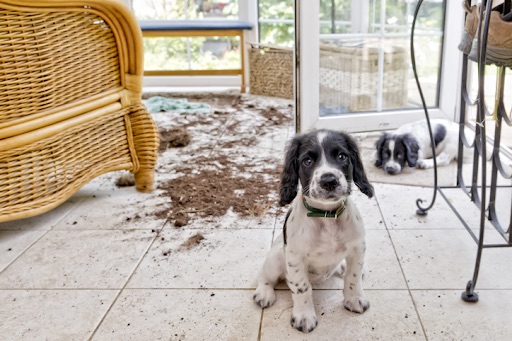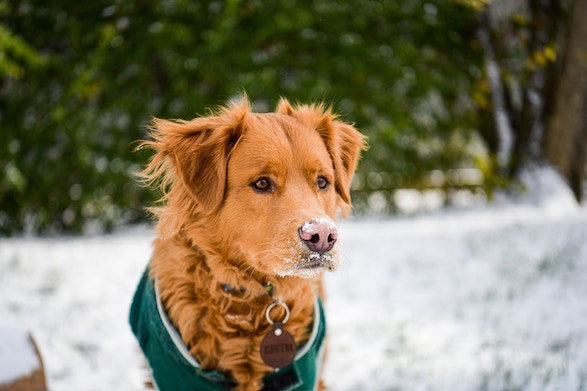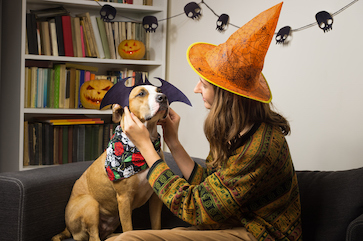Congratulations! We are so excited about your new puppy. Your home, on the other hand, might not be so thrilled. A puppy is so fun, but can also bring a lot of work and stress into your life. Watching for accidents, barking in the kennel all night, frequent outings, and not to mention their curious little minds getting into everything! With everyday decor and the rotation of holiday candy and flowers, it can be overwhelming trying to balance your home while keeping your puppy safe. We have compiled a list of management strategies to help puppy-proof your home without sacrificing your furnishings and also helpful manners and obedience to reinforce as your puppy matures.
Management strategies
- Have your puppy wear a secure collar and drag a leash at all times when you are home. This is useful for keeping your puppy close and being able to more easily retrieve them for safety. If you need to finish a chore, you can use the leash to tether your puppy to a sturdy piece of furniture for a couple of minutes. By doing this, you can accomplish tasks and not have to worry about what your puppy might be getting into while you can’t watch them.
- If you cannot watch your puppy because you need to shower, check the mail, or run to the grocery store, it is critical that you secure your puppy. We highly recommend that when you do so, the puppy has minimal space to reduce accidents, they cannot escape, and there are no inappropriate items or choking hazards in the space. A kennel is our preferred option – you can use a puppy playpen as well if you try it beforehand and ensure your puppy cannot climb out of it! This management strategy allows you to run errands, improves crate training with your puppy and decreases the risk of separation anxiety, and protects your home from a curious puppy while keeping your puppy safe.
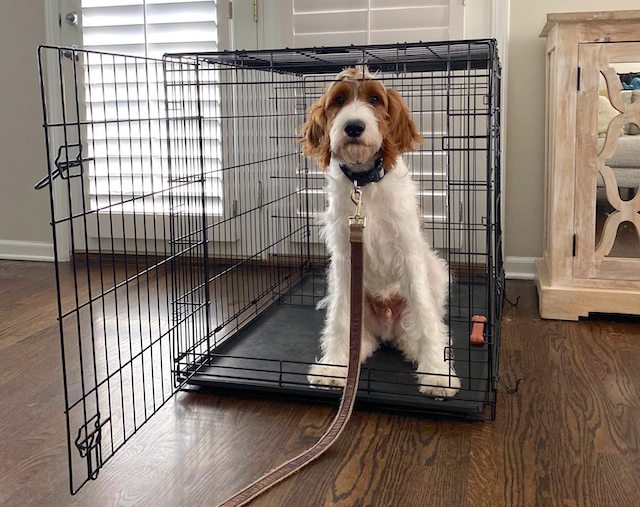
- When you are home, make it a habit to not leave any candy or wrappers out and to pick up any dropped laundry. It can only take a second or two for your puppy to swallow a piece of chocolate or even a sock! In working closely with veterinarians and clients, we know of dogs who have eaten things like rolls of toilet paper, books, tin foil, pieces of furniture, and even children’s toys like Legos! You can never be too careful, especially if it means avoiding a costly emergency room visit.
- We recommend your puppy have a variety of 8-12 toys. Good options include normal-size (not puppy-size) Nylabones with different textures and flavors, antlers, femur and cow bones, Kongs, etc. We tend to avoid soft toys, rope toys, and edible bones like rawhides to avoid choking hazards. Watch your puppy and whenever they pick up or chew on one of their toys, take time to praise and pet them. This will increase the value of their toys and encourage them to choose their toys over chewing on inappropriate items or furniture.
- Do not feed your puppy scraps of food directly from the kitchen counter or the dining table. Human food isn’t always bad, but where it comes from and when matters. Be mindful when cooking or cleaning in the kitchen and watch your puppy. If they enter the room calmly, sit or lay down, feed them a treat! Also, feed them a treat if they seem interested in something on the counter, but choose not to jump up. If you’re eating at the table, reward your puppy if they sit or lay down a few feet away from you or waits on their bed. Your puppy might not offer these behaviors often, but if you catch them as soon as they happen and reinforce it, they will happen more often and help shape a patient, well-mannered dog.
Manners and obedience
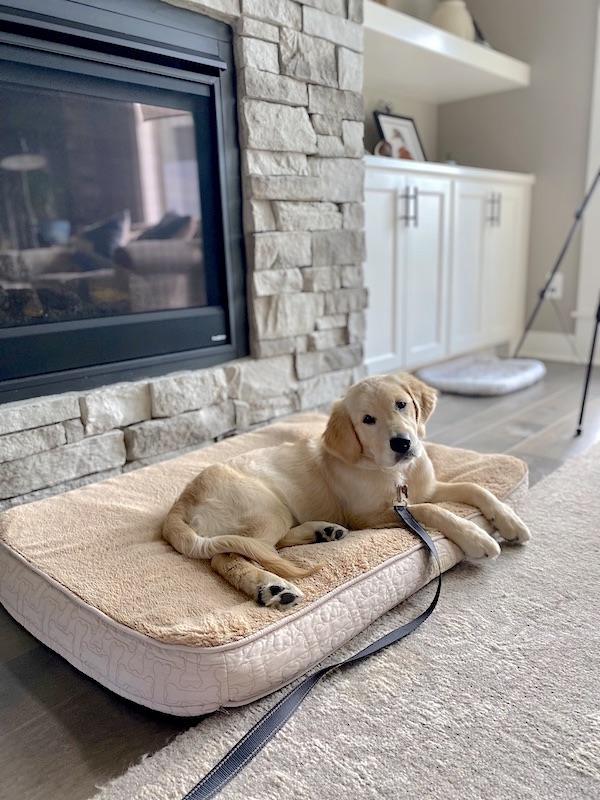
Sit and/or Down
As mentioned above, sit and down are great commands for managing your puppy. By practicing these commands during training here and there, your puppy is more likely to perform those tasks for you without being asked. If this happens, always reinforce it by praising them, giving them affection, or giving them a treat. While working with our Board and Train puppies, we begin to see them sit while we empty the dishwasher, lay down while we fold laundry, and go chew on their favorite toy while we rest on the couch. It takes time, patience, and consistent training, but it’s so rewarding to see a puppy with little to no anxiety find self-confidence and tasks they enjoy.
Place
The place command is a fan favorite! We teach puppies to sit or lay down on their bed with all four paws on the bed. They can choose any position they like or even chew on a toy as long as they wait to come off until a release word is given. This command is first taught by leading the puppy onto the bed and giving them a treat, then by reinforcing staying on the bed in timed intervals. As your puppy stays longer, time is increased between each treat given. With practice, you can use place when guests come over, whie you are cooking or eating dinner, or manage your puppy when cleaning up a mess or your child is playing with toys your puppy is not allowed to have. You can improve your puppy’s obedience, teach them patience, and protect your puppy from chewing on things they shouldn’t by practicing one simple command!
Wait
Wait is a command that means “don’t move forward” and can be used at doorways and entryways in your home. This is helpful when you need to check the mail or when you don’t want your puppy to come into the kitchen when baking or using ingredients that might be poisonous to dogs. Set your puppy up for success by starting at a doorway with a definitive threshold or barrier. Ask them to “wait” and feed them a treat when they wait behind the line. If they step over it, body block them and back them up to their original position and try again until they are successful. When transitioning to entryways in the home, you can put down painter’s tape to help your puppy understand where the barrier is. With practice, they’ll know where to wait when you ask without extra help!
Name Recognition
Your puppy reliably responding to their name the first time you call them is an essential skill. You can create a strong foundation by saying your puppy’s name once and feeding them a treat when they turn and look at you. This can be helpful as your puppy ages and you trust them more to grant them more space in the home. Even though you might worry less about your puppy having an accident, the possibility of them chewing on furniture or swallowing something they shouldn’t is still very real. It’s a good idea to give your puppy a small amount of independence, but call their name periodically and make sure they come to you and check in every time. This way, your puppy will begin to check in with you naturally and this behavior can be generalized to the backyard, public places, and even dog parks!
Equipped with this knowledge and management strategies, you can bring a new puppy into your home without fear! By implementing these suggestions and introducing obedience early, you can protect your furniture and seasonal decorations while also raising a polite, well-mannered puppy.

If you attempt these recommendations and want help, or feel like it’s a lot of work for your schedule, contact our puppy specialists and behavior consultants today! Our programs are personalized to support your lifestyle and set both you and your puppy up for success. Let our trainers do the leg work for you and support you in continuing that training for your dog and reap the benefits for the rest of their life and beyond!
